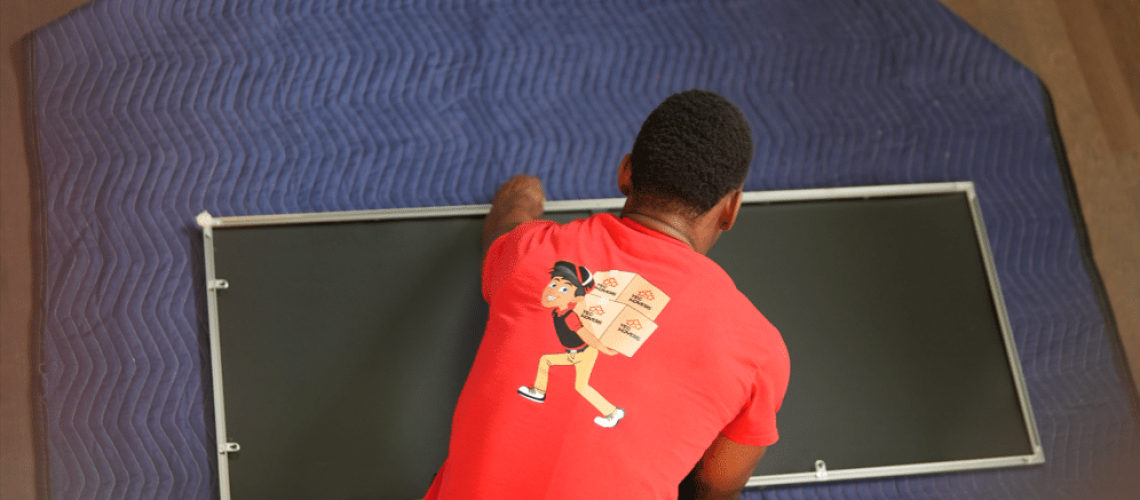Packing mirrors for a move often creates anxiety about potential damage during transit. Fortunately, with proper techniques and materials, you can protect these fragile items effectively. Many homeowners choose to work with leading moving services to handle delicate items, but understanding the packing process yourself remains valuable. This guide explores essential strategies for securing mirrors—from selecting appropriate materials to proper labeling—ensuring they arrive at your new home intact and ready to hang.
Choosing the Right Packing Materials
Sturdy and protective materials are essential for mirrors during transportation. Bubble wrap provides an excellent cushioning layer that protects against scratches and impacts. Measure your mirror’s dimensions to ensure you have the correct size of bubble wrap. Foam corner protectors are crucial for safeguarding vulnerable edges—place these on each corner before wrapping for added security during transit.
For outer packaging, mirror boxes specifically designed for this purpose work best. These durable boxes provide a snug fit, reducing movement risk inside the box. If mirror boxes aren’t available, thick cardboard sheets can create a custom-sized box that fits perfectly. Either method ensures your mirror remains stable and protected throughout the moving process.
Preparing the Mirrors for Packing
Begin by thoroughly cleaning the glass surface with mild glass cleaner and a soft, lint-free cloth. Clean mirrors prevent dirt or grime from causing scratches during transportation.
- Remove any current hardware: Take off hooks, brackets, or screws attached to the mirror to prevent damage or bending during packing.
- Inspect for any current damage: Examine the mirror for existing cracks, chips, or weak spots that may require special attention during packing.
- Apply protective edging: Use foam or cardboard edge protectors to safeguard delicate edges from potential impacts or pressure while in transit.
Wrapping and Securing the Mirrors
Select a sturdy, appropriately sized moving box for your mirrors to ensure a snug fit and maximum protection. Verify that mirrors are clean and dry before wrapping. Use a layer of bubble wrap or packing paper to protect the surface, starting from one corner and wrapping diagonally until all edges are covered. Secure the wrap with packing tape to create a cushioned barrier. Place cardboard corner protectors on each corner and secure with tape to prevent shifting.
Mirror boxes offer additional protection due to their specialized design. If these aren’t available, layer the bottom of your moving box with crumpled paper for extra cushioning. Once the mirror is placed in the box, fill any gaps with additional packing material to prevent movement. The goal is to keep the mirror well-protected and immobile inside the box.
Packing the Mirrors in Boxes
After securing and protecting your mirrors, carefully pack them in your selected sturdy, appropriately sized moving box. Follow these steps for damage-free moving:
- Positioning: Place mirrors vertically inside the box to prevent bending or warping during transportation.
- Padding: Use ample cushioning materials such as bubble wrap or packing paper around the mirrors for padding and shock absorption.
- Securing: Fill empty spaces in the box with additional cushioning to ensure mirrors stay in place without shifting during transit.
Labeling and Handling the Packed Mirrors
Proper labeling ensures easy identification and careful handling during the moving process. Use a permanent marker to write ‘FRAGILE’ prominently on the box. Include ‘MIRRORS’ and specify which room they belonged to in your old home. This helps movers understand the delicate nature of the contents and where to place them in your new home.
Store boxes upright and never beneath heavier items. Use proper lifting techniques when carrying these boxes to avoid accidents. Communicate clearly with your movers about the fragile contents inside the labeled boxes. These precautions significantly reduce the risk of damage, allowing you to enjoy your mirrors in your new home just as you did in your previous one.
Other Related Articles:
– How to Pack Mugs for Moving
– How to Transport Pet Fish When Moving


